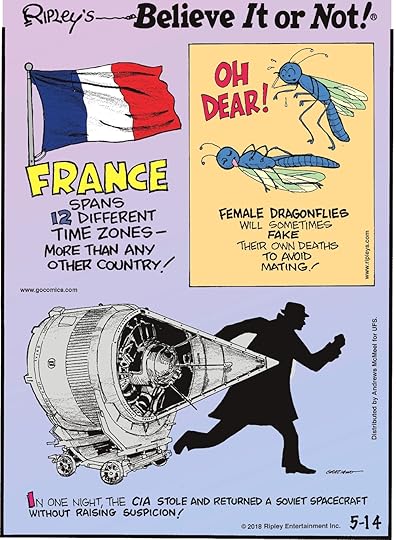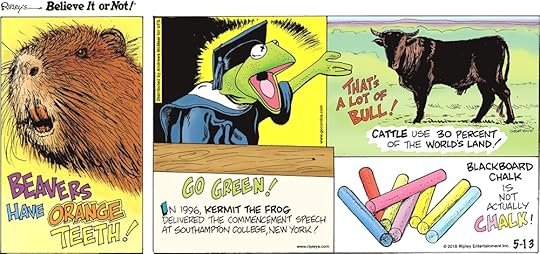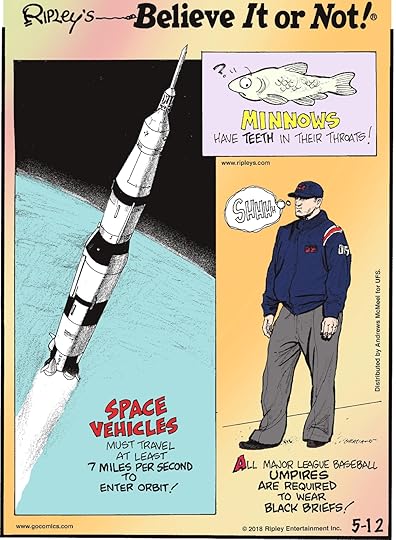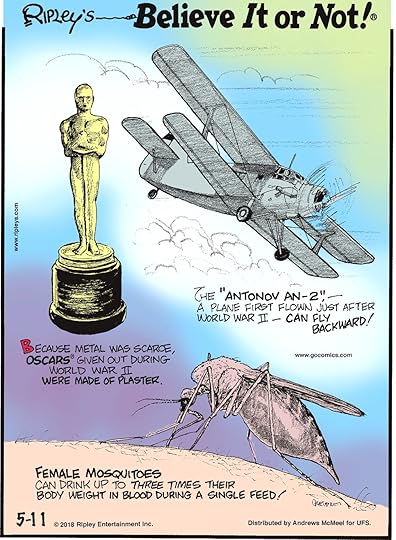Ripley Entertainment Inc.'s Blog, page 344
May 14, 2018
CARTOON 05-14-2018
May 13, 2018
CARTOON 05-13-2018
May 12, 2018
CARTOON 05-12-2018
May 11, 2018
Dine With A 14-Foot Gator And Other Wild Experiences At Wild Florida
Featured in Ripley's Believe It or Not!
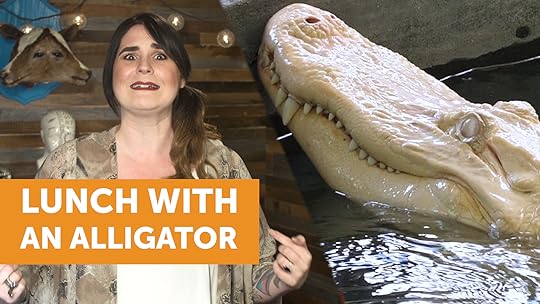
Believe it or not, alligator attacks are actually extremely rare. In fact, the likelihood of a Florida resident being injured in an unprovoked alligator attack is roughly one in 2.4 million, according to the Florida Fish and Wildlife Conservation Commission. Note “unprovoked.”
In today’s episode of Cool Stuff Strange Things, we head on over to Wild Florida to get up close and personal with some of the Sunshine State’s scariest—Crusher, a 14-foot alligator, and Snowflake and Blizzard, two very rare albinos! By “up close and personal,” we mean it! At Wild Florida you can actually enter into these modern-day dino’s enclosures and, believe it or not, even hand feed them.
Watch CSST for the full story!
We survived our close encounters, but if you ever find yourself up against a gator, RUN—and do it in a straight line, not zigging and zagging to “throw them off” as commonly thought. Their blind spot happens to be directly in front of their nose!
For more misconceptions, check out Or Not each Thursday on Ripleys.com.
Source: Dine With A 14-Foot Gator And Other Wild Experiences At Wild Florida
One Of Marvel’s Iron Man Suits Has Been Stolen
Featured in Ripley's Believe It or Not!
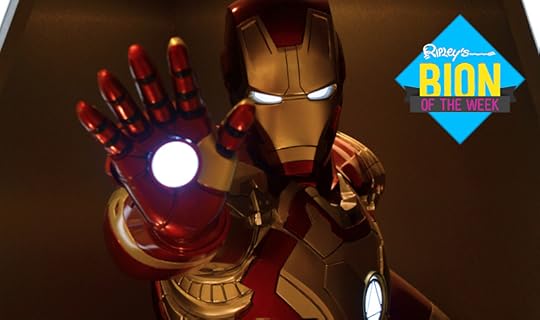
[May 6-12th, 2018] Sharks apparently like to get funky, a betting woman is the real Kentucky Derby winner, a man drives a truck full of bees, and one of Iron Man’s suits has been stolen.
Bees and Bar-B-Que
Wallace Leatherwood of North Carolina picked up an order of 18,000 bees—all packaged in boxes—but couldn’t resist stopping at Moe’s Original Bar-b-Que. Leaving the bees in the cab of his truck, he returned well-fed with a sweet tea to-go. Unfortunately, around 3,000 bees had escaped. Leatherwood drove 40 miles on the Interstate, with a truck full of bees, and didn’t get stung once.
Sharks Like Jazz
Sharks may have been around for a long time, but it turns out they prefer jazz over classical music. According to research conducted by the Fish Lab at Macquarie University, sharks can be trained to recognize jazz music in exchange for food rewards. Of course, Ripley’s Aquarium of Canada is ahead of the game and has been hosting jazz nights for years.

Gambler Wins Big At Kentucky Derby
The first place horse and jockey normally win the biggest prize at the Kentucky Derby, but this year racing fan Margaret Reid almost one-upped the equestrian champ. After carefully analyzing the lineup, she bet 18 dollars on five winning horses and walked away with $1.2 million—just $40,000 short of the race’s grand prize.
What a champion! Let’s watch it again….pic.twitter.com/x3Bet8DkP3
— Kentucky Derby (@KentuckyDerby) May 5, 2018
Wonka’s Wild Ride
We all hate the vanilla monotony of traffic, but what if it had a different flavor? A tanker carrying several tons of chocolate flipped over on a highway in Poland, spilling an immense puddle of creamy chocolate onto the pavement. As the chocolate slowly congealed, cleanup crews got to work, though bystanders noted the crew was all smiles.
Na #A2 Poznań-Warszawa przewróciła się cysterna z czekoladą. Trwa sprzątanie jezdni
CARTOON 05-11-2018
May 10, 2018
Seeing Red: Turns Out Bulls Really Don’t Care About Red At All
Featured in Ripley's Believe It or Not!

Or Not
In today’s world many misconceptions have been perpetuated—becoming modern day “facts”—when, in reality, myths and hearsay have taken over. Sorry to burst your bubble, but in this weekly column, Ripley’s puts those delusions to the test, turning your world upside down, because you can’t always…Believe It!
Today: Bulls don’t hate red.
Bulls Don’t Care About Color
For centuries, bullfighting has captivated audiences, with a mixture of excitement, athleticism, and the possibility of gore. Historians trace its roots back to Spain in the first century, and by the 1920s, Hemingway captured its artistic qualities in his writings. Today, its brutality has been debated among animal rights activists.
But no matter one’s feelings on the sport, it seems that one aspect has been misconstrued for at least a couple of hundred years.
Most can picture the scene: It is a gigantic, open-air arena, filled with thousands of screaming fans. A heroic bullfighter stands stoically in the face of possible impending doom. Just 20 yards away is a 1,800-pound creature that can stick a man with its horns and toss him 30 feet into the air. The matador holds his red cape, or muleta, and taunts the bull, making it want to charge.
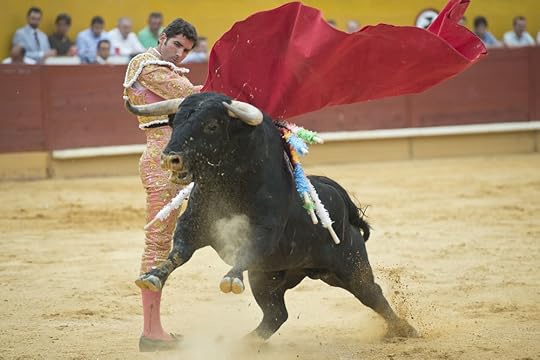
Angel Simon/Shutterstock
Here’s the rub: The bull doesn’t care what color that cape is. It makes no difference. He just hates the jerky movement, and he wants to make it stop.
So he charges. Again and again.
Why doesn’t the bull care about color? For more than 200 years matadors have been using red capes in their death-defying dances, but they were only using the color red to cover up the blood shed by the bull. Is it because, as some say, the bulls are colorblind? Or is it because they see many colors, including red, and don’t differentiate, as others claim?
Scientists are split on the specifics.
“Bulls, along with all other cattle, are color-blind to red,” writes Brooke Borel of LiveScience.com. “Thus, the bull is likely irritated not by the muleta’s color, but by the cape’s movement as the matador whips it around. In support of this is the fact that a bull charges the matador’s other cape—the larger capote—with equal fury. Yet this cape is magenta on one side and gold or blue on the other.”
Others see it a bit differently.
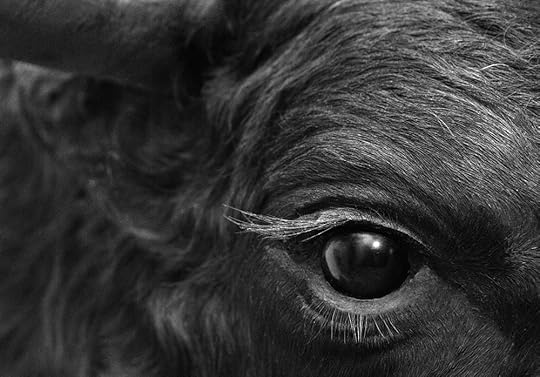
“Bulls’ eyes are dichromatic—they have two color-detecting pigments in their retinae,” writes TheNakedScientists.com. “That means they can see red, but they can also see many other colors too. But, because they are dichromats they would see colors in a similar way to a color blind person. In other words, there’s nothing special about red; it’s more likely to be that the bull is excited by someone wearing silly, bright clothes, dancing about and flapping something in the bull’s direction. The bull is generally hot, bothered and fed up, making it more likely to attack, but there’s no evidence that there’s anything special about the color red for a bull.”
Differing opinions, but they agree on one thing: Red makes no difference to the animal.
To prove it once and for all, the guys from Mythbusters got into the act, and attempted to test this belief. In the most telling experiment, they put three matadors in a ring, each holding different colored flags (red, white and blue).
“The red, blue and white flags got equal, half-hearted attacks when they were motionless,” they reported. “In order to elicit an aggressive charge response from the bull, the flags had to be waved.”
It seemed like definitive proof, whether the animal is colorblind or not.
So good news: If you ever find yourself dressed in red, caught between a bull and a hard place, you’ll be okay.
So long as you don’t flail around. Or move a muscle.
Then again, maybe you shouldn’t take our word on this. Maybe it’s best to just run like hell.
By Ryan Clark, contributor for Ripleys.com
Source: Seeing Red: Turns Out Bulls Really Don’t Care About Red At All
CARTOON 05-10-2018
May 9, 2018
Taft’s Presidential Cow: Pauline Wayne
Featured in Ripley's Believe It or Not!
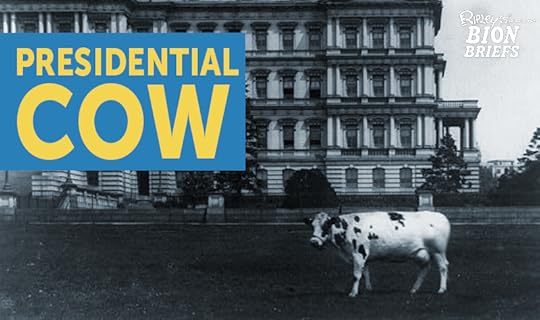
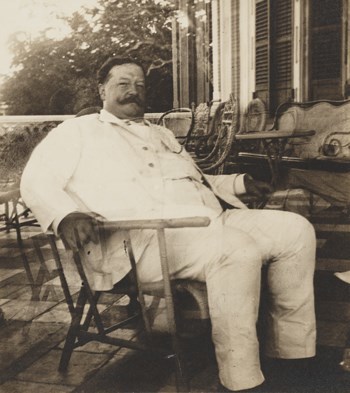 You might think we’re talking about Taft himself when we say there was once a cow on the White House lawn—he was the fattest president—but we mean a real thoroughbred Holstein.
You might think we’re talking about Taft himself when we say there was once a cow on the White House lawn—he was the fattest president—but we mean a real thoroughbred Holstein.
At the time William Howard Taft was elected, milk still wasn’t something you could easily come by without your own cow. Taft and his family moved in with a cow they had named Mooly Wooly, but she was soon replaced with a gift-cow, Pauline Wayne, from a Wisconsin congressman.
The fate of Mooly Wooly isn’t known for certain, but she’s believed to have died from being overfed oats. Apparently serial oat feeders, it’s known that a previous cow owned by the Tafts met the same fate. Authorities on the matter note that oats are suitable feed for horses, but not cows.
Pauline Wayne
Pauline, however, took to the job well, providing the first family with an ample supply of milk and butter. Taft weighed a hefty 340 pounds during his time in office and even had the White House tub enlarged after reports of him getting stuck in the old one.
In her prime, Pauline produced around 8 gallons of milk per day. Her supply was so bountiful that White House guests were able to purchase small bottles of presidential milk for just 50 cents each.
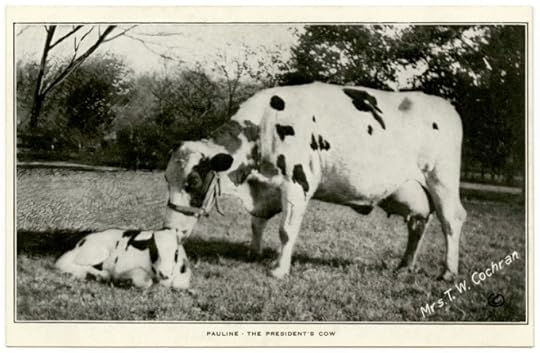
Pauline quickly became a publicity draw, and the National Journal is even recorded to have written 20 news stories about her in just two years. Taft didn’t have time to visit every dairy expo and Cow show, so he would send Pauline as his envoy.
On one of these trips outside Washington, Pauline was traveling by private train car when the unthinkable happened: She went missing. White House officials scrambled to broadcast missing cow reports on the telegram wires. Pauline was eventually found in a slaughterhouse holding pen and was saved just in time “from the bludgeon of the slaughter,” according to the Times.
Another incident involved a teacher sneaking onto the White House lawn and stealing some of Pauline’s milk for himself.
Pauline’s health eventually began to suffer under the weight of her office, and she was retired with fanfare to a Wisconsin farm. Today her cowbell rests in the Presidential Pet Museum in Williamsburg, Virginia. To date, she is the last serving Presidential cow.
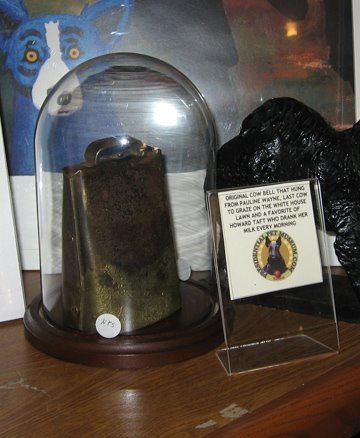
CARTOON 05-09-2018
Ripley Entertainment Inc.'s Blog
- Ripley Entertainment Inc.'s profile
- 52 followers


